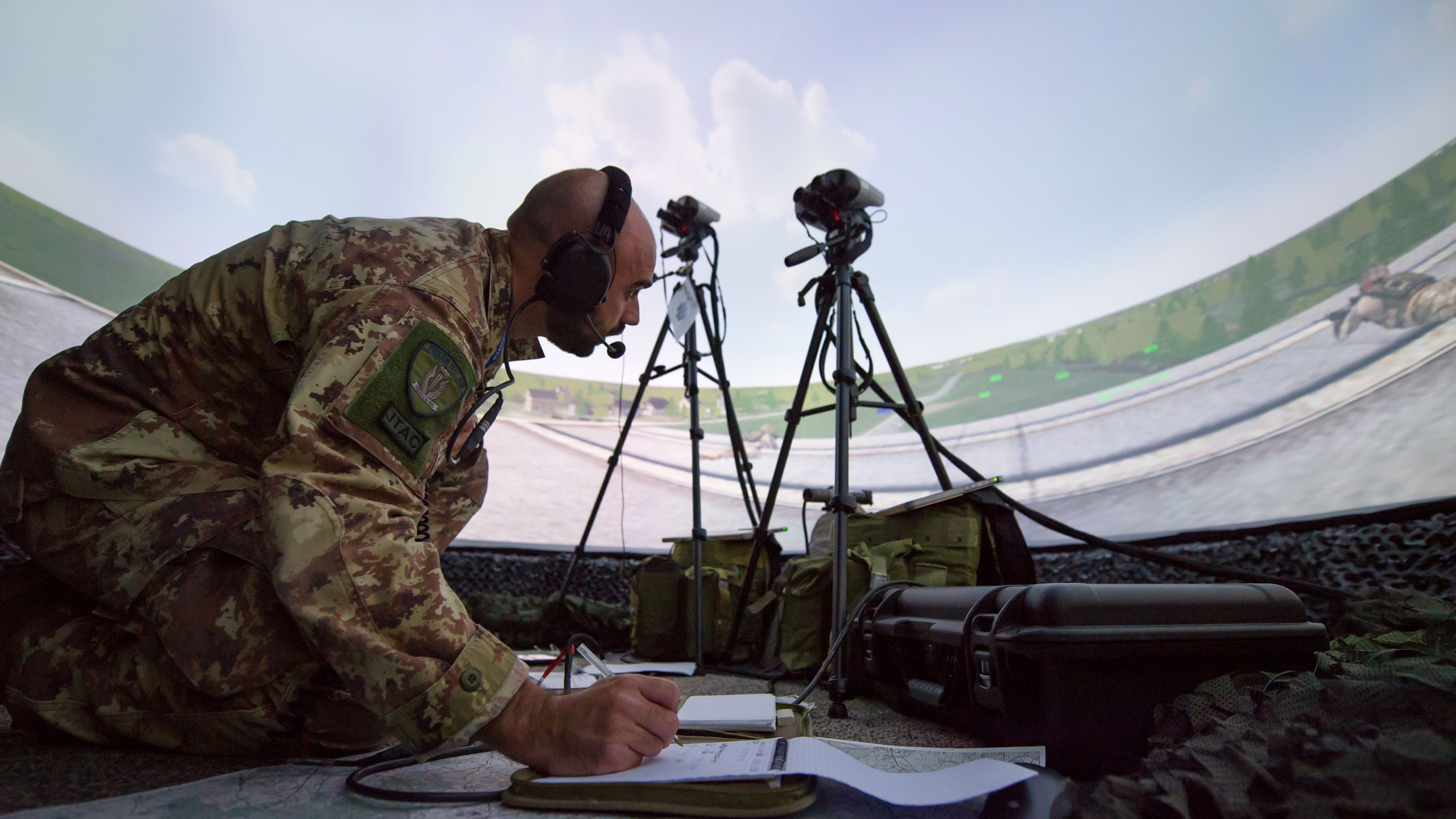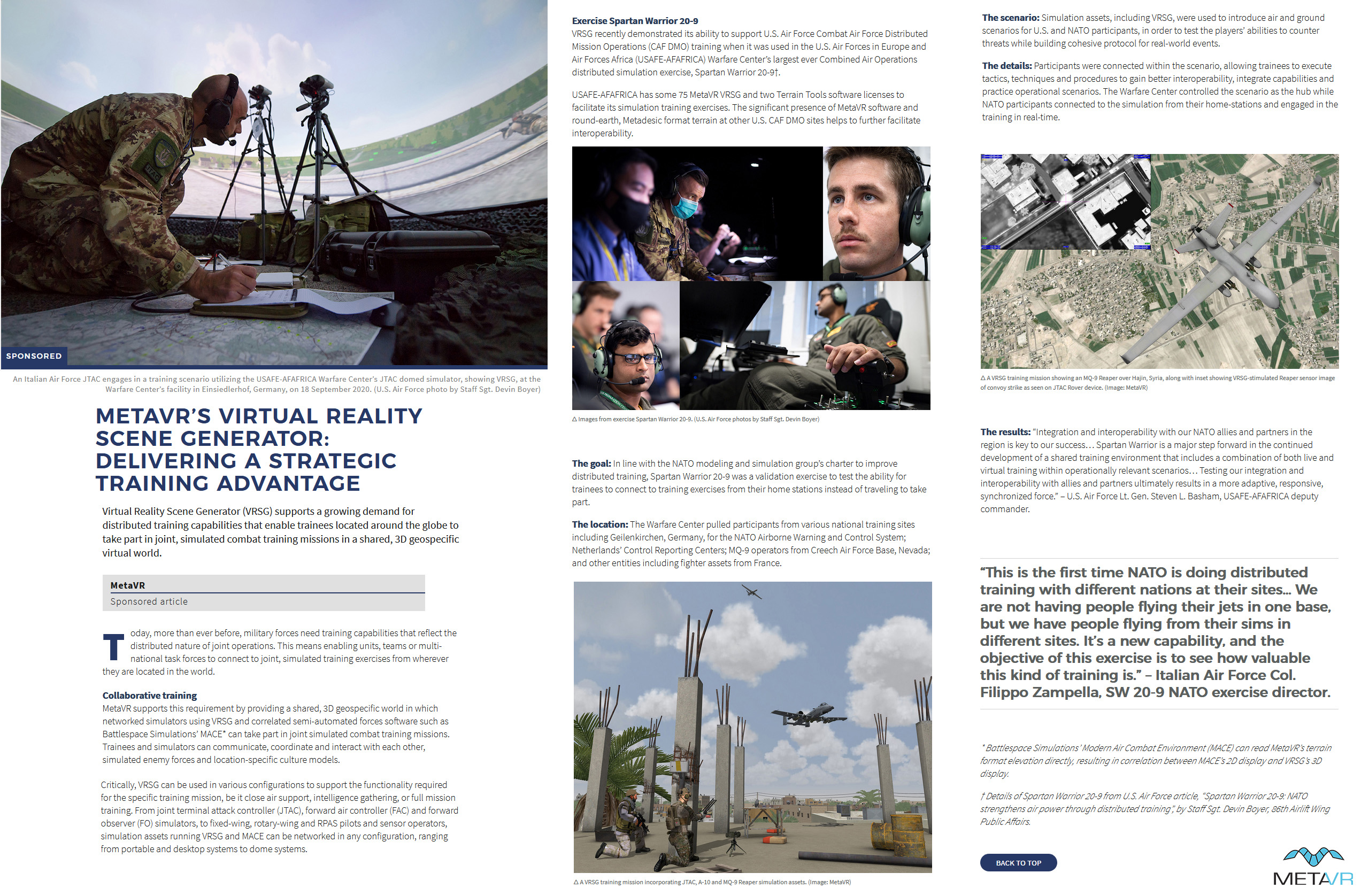Spartan Warrior 20-9 case study

A joint terminal attack controller (JTAC) engages in a training scenario utilizing the U.S. Air Forces in Europe and Air Forces Africa Warfare Center’s JTC TRS domed simulator at the Warfare Center’s facility in Einsiedlerhof, Germany, Sept. 18, 2020, in preparation for exercise Spartan Warrior 20-9. (U.S. Air Force photo by Staff Sgt. Devin Boyer.)
MVRsimulation's Virtual Reality Scene Generator (VRSG) supports growing demand for distributed training capabilities that enable trainees located around the globe to take part in joint, simulated combat training missions in a shared, 3D geospecific virtual world. A recent demonstration of VRSG's ability to support Combat Air Force Distributed Mission Operations (CAF DMO) training was in September 2020, when VRSG was used in the U.S. Air Forces in Europe and Air Forces Africa (USAFE-AFAFRICA) Warfare Center’s largest ever Combined Air Operations distributed simulation exercise, Spartan Warrior 20-9.
The goal: In line with the NATO modeling and simulation group’s charter to improve distributed training, Spartan Warrior 20-9 was a validation exercise to test the ability for trainees to connect to training exercises from their home stations instead of traveling to take part.
The location: The Warfare Center pulled participants from various national training sites including Geilenkirchen, Germany, for the NATO Airborne Warning and Control System; Netherlands’ Control Reporting Centers; MQ-9 operators from Creech Air Force Base, Nevada; and other entities including fighter assets from France.
The scenario: Simulation assets, including VRSG, were used to introduce air and ground scenarios for U.S. and NATO participants, in order to test the players’ abilities to counter threats while building cohesive protocol for real-world events.
The details: Participants were connected within the scenario, allowing trainees to execute tactics, techniques and procedures to gain better interoperability, integrate capabilities and practice operational scenarios. The Warfare Center controlled the scenario as the hub while NATO participants connected to the simulation from their home-stations and engaged in the training in real-time.
The results: “Integration and interoperability with our NATO allies and partners in the region is key to our success… Spartan Warrior is a major step forward in the continued development of a shared training environment that includes a combination of both live and virtual training within operationally relevant scenarios… Testing our integration and interoperability with allies and partners ultimately results in a more adaptive, responsive, synchronized force.” – U.S. Air Force Lt. Gen. Steven L. Basham, USAFEAFAFRICA deputy commander.
“This is the first time NATO is doing distributed training with different nations at their sites… We are not having people flying their jets in one base, but we have people flying from their sims in different sites. It’s a new capability, and the objective of this exercise is to see how valuable this kind of training is.” – Italian Air Force Col. Filippo Zampella, SW 20-9 NATO exercise director.

VRSG was used in the U.S. Air Forces in Europe and Air Forces Africa (USAFE-AFAFRICA) Warfare Center’s largest ever Combined Air Operations distributed simulation exercise, Spartan Warrior 20-9.
